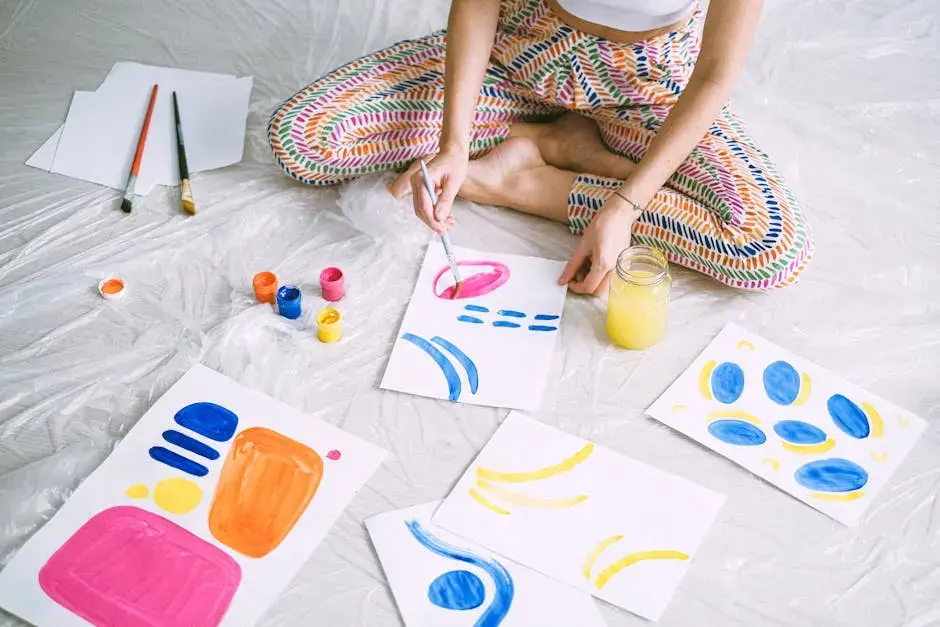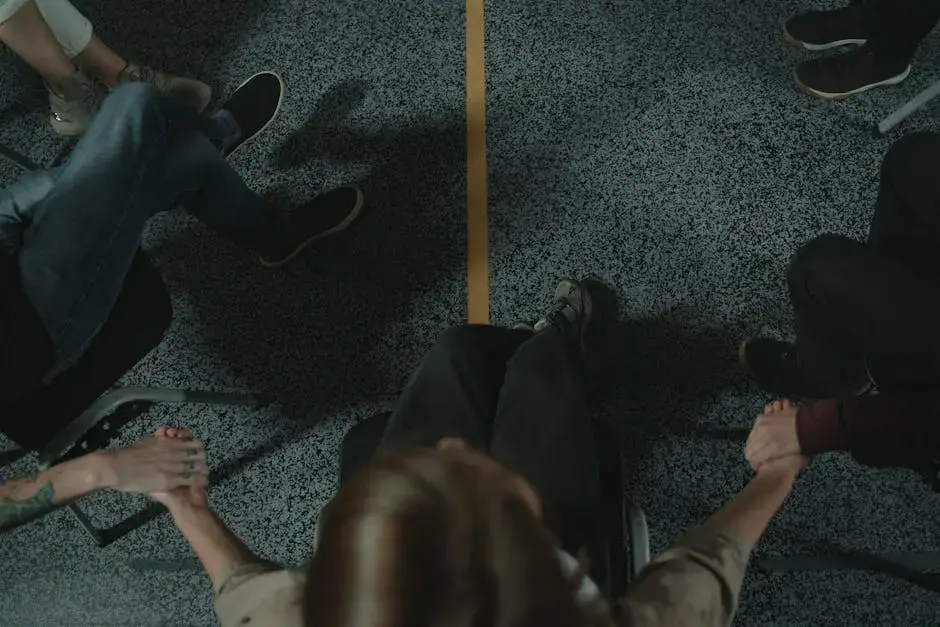12 Effective Techniques in Creative Therapy for Managing Anxiety and Depression
- Karrie Stafford

- Apr 11
- 6 min read
Creative therapy offers a unique approach to managing anxiety and depression through artistic expression. This blog will explore twelve effective techniques that can empower individuals to navigate their feelings and foster emotional resilience. Whether you're an art enthusiast or just looking for new coping strategies, these techniques can help spark inspiration and healing in your journey.

1. Expressive Writing for Emotional Clarity
Using writing as a tool for self-exploration can help uncover emotions and think through challenging situations. By putting pen to paper, you engage in a dialogue with your inner self, allowing floodgates of feelings to open. The simple act of journaling provides a private space where your emotions can be expressed freely. Whether you jot down your daily experiences or delve deeper into complex feelings, this practice can facilitate clarity and insight.
Moreover, expressive writing is not bound by rules or structure, making it accessible for everyone. You don’t need to worry about grammar or punctuation; it’s all about getting your thoughts out. This can be a liberating experience, as it encourages you to be unapologetically you. The process can reveal patterns in your thoughts, helping you better understand the triggers contributing to your anxiety or depression.
2. Art Journaling for Visual Expression
Combining imagery and text, art journaling allows individuals to freely express feelings without judgment. It is a delightful fusion of drawing, painting, and written expression, offering diverse ways to communicate emotions. Engaging with colors and textures can create a rich sensory experience that reflects your inner state, revealing insights that words alone may struggle to convey.
Additionally, art journaling can be a playful way to explore your creativity. You need not be a skilled artist; it’s all about expressing yourself. Even simple doodles or a splash of color can evoke feelings and sensations, making it easier to process and understand your moods. This non-linear approach liberates pressure, turning art-making into a therapeutic escape rather than a chore.
3. Music Therapy for Relaxation and Reflection
Listening to or creating music can provide comfort, alleviate stress, and stimulate emotional expression. Music has a profound ability to resonate with our moods, often speaking to feelings we cannot articulate. Whether it's a soothing melody or an upbeat tune, music can serve as a powerful tool in managing anxiety. By simply playing your favorite song, you might find a transformation in your emotional landscape.
Moreover, creating music, be it through songwriting or playing an instrument, can be particularly therapeutic. Expressing emotions through melodies allows individuals to channel feelings constructively. Even if you don’t consider yourself musically gifted, experimenting with sound can serve as a release, making music an inviting entry point to manage anxiety and depression.
4. Dance Movement Therapy for Bodily Awareness
Engaging in free movement can help release pent-up emotions and foster a connection between mind and body. Dance movement therapy encourages individuals to express themselves through body language, breaking free from the constraints of verbal communication. The rhythm of your body can convey what's often too complex to say, unlocking hidden feelings and promoting self-awareness.
Incorporating movement into your routine can be energizing and liberating. You don’t need formal training; simply moving to the music or even dancing in your living room can create a joyful outlet. This release can elevate your mood and serve as a reminder of the mind-body connection that’s essential for emotional health. Such practices not only improve physical well-being but also enhance your emotional landscape.
5. Mindfulness-Based Art Practices
Artistic activities combined with mindfulness techniques can enhance focus and promote relaxation. Mindfulness invites you to be present in the moment, and combining this with art can deepen your experience. For example, when painting or drawing, try to focus solely on the sensations and emotions involved in the process. This practice can help you step back from anxiety, grounding you in the here and now.
Additionally, these methods encourage a state of flow, where you immerse yourself in the creative process, momentarily forgetting about stressors. Taking a mindful approach to art can help you reconnect with your senses and emotions, enabling further exploration into your feelings and facilitating healing. Forget about perfection; instead, find joy in the creation itself.
6. Nature-Based Creative Activities
Engaging with nature through photography, painting, or writing can uplift your mood and inspire creative expression. Nature presents endless beauty, and capturing it through art can serve as a meditative practice. The simple act of stepping outside can invigorate your senses, providing fresh perspectives and insights into your feelings.
Furthermore, immersing yourself in natural settings often has a calming effect on anxiety. Whether it’s sketching a tree or taking photographs of flowers, these activities encourage mindfulness and appreciation for your surroundings, ultimately fostering gratitude. When focusing on nature, you may experience a profound sense of connection, both to yourself and the environment, offering a beautiful escape from the chaos.
7. Drama Therapy for Role Exploration
Using theater techniques, drama therapy encourages self-discovery and exploration of different perspectives. By stepping into various roles, individuals can safely express emotions and confront challenges. This practice can be especially beneficial for those who struggle to articulate their feelings verbally, providing a creative space to explore complex issues.
When you act out scenarios or embody different characters, it can lead to profound realizations and emotional breakthroughs. Moreover, this technique fosters empathy as you understand experiences from different vantage points. Drama therapy, therefore, not only nurtures personal growth but also enhances your ability to connect with others through shared stories and experiences.
8. Crafting as a Mindful Practice
Craft activities offer a calming experience, allowing individuals to create and engage their hands while tuning into their thoughts. Whether you enjoy knitting, scrapbooking, or building models, crafting can provide a sense of accomplishment and relaxation. Engaging with materials can ground you, helping to reduce anxiety and build your focus.
Additionally, crafting fosters mindfulness as it encourages you to be present with the activity at hand. This can create a soothing rhythm that helps distract from anxious thoughts. Over time, the act of creating something tangible can also enhance self-esteem, reminding you of your capabilities and providing joy in the process.
9. Photography for Self-Reflection
Using the lens to capture moments can enhance one's ability to notice and appreciate their surroundings, creating space for gratitude. Photography encourages awareness of beauty, prompting you to find joy in the little things, which can shift your mindset. This practice can be particularly helpful in managing feelings of sadness as it highlights the positive aspects of life.
Moreover, documenting your journey through photographs offers insights into your emotional state. Looking back on captured moments can reveal patterns, helping you connect with your past feelings and understand your emotional growth. It becomes a reflective tool, offering clarity and celebration of personal milestones and transformations.
10. Coloring for Calmness
Adult coloring books have gained popularity as a simple method to reduce anxiety and promote relaxation through color. This engaging activity invites you to focus on the present moment, steering your mind away from stress and concerns. By selecting colors and making decisions about your artwork, you regain a sense of control, which can be empowering when dealing with anxiety.
Furthermore, the repetitive action of coloring can be meditative, helping to quiet racing thoughts. As you immerse yourself in the intricate patterns and vibrant hues, you may find a soothing rhythm that fosters peace and tranquility, making this an accessible option for anyone looking to explore creativity for emotional well-being.
11. Storytelling as a Healing Tool
Sharing stories can foster connections and offer new insights into personal experiences, enhancing emotional growth. Storytelling allows for the crafting of narratives that can transform pain into purpose, helping individuals to contextualize their struggles. By voicing or writing down your story, you create a powerful framework for understanding, acceptance, and healing.
Furthermore, engaging with others through storytelling can cultivate empathy and understanding, reinforcing your relationships. Hearing others' experiences provides comfort and a reminder that you are not alone in your feelings. In this shared space of vulnerability, healing often flourishes, reminding you of the profound human experience we all share.
12. Collaborative Creative Projects
Working on creative tasks with others can build support networks and enhance social interaction, contributing to emotional well-being. Collaborative projects encourage teamwork, allowing individuals to connect through shared goals and creativity. This fosters a sense of belonging and community, which is vital for those dealing with isolation from anxiety or depression.
Moreover, these projects can be incredibly fulfilling as they harness the strengths of each participant, creating something more significant together. The laughter, brainstorming, and shared success can uplift spirits, highlighting the importance of connection in managing emotional health. In times of distress, knowing that you're part of a community can be a powerful antidote to feelings of loneliness.




Comments